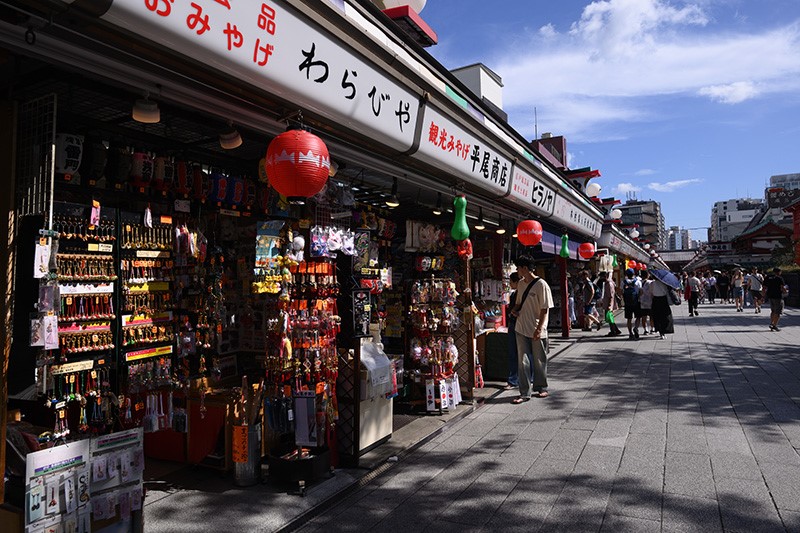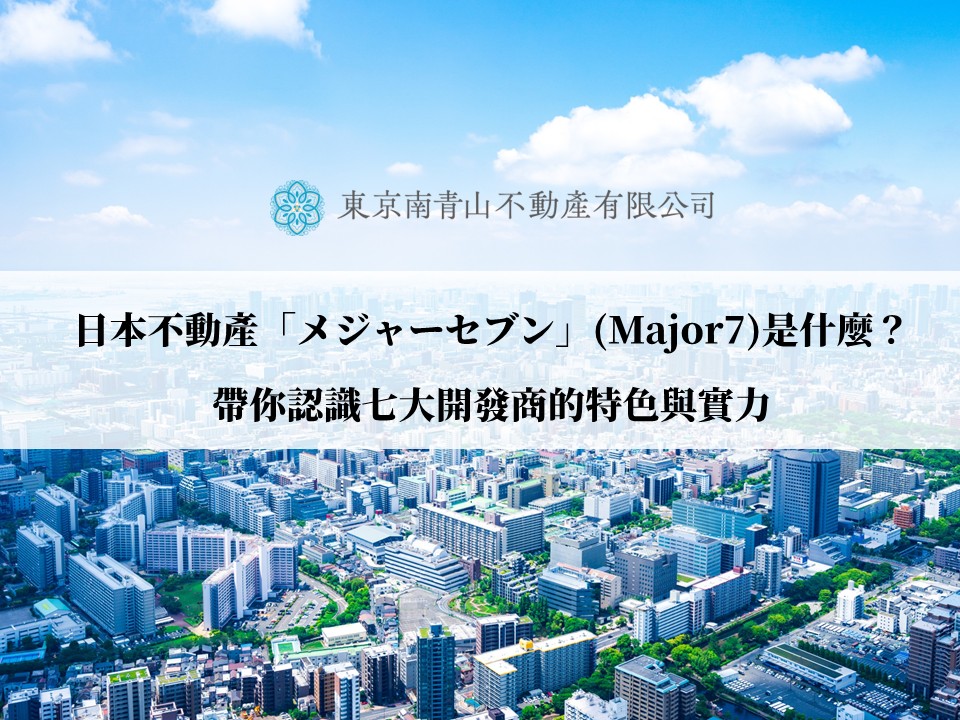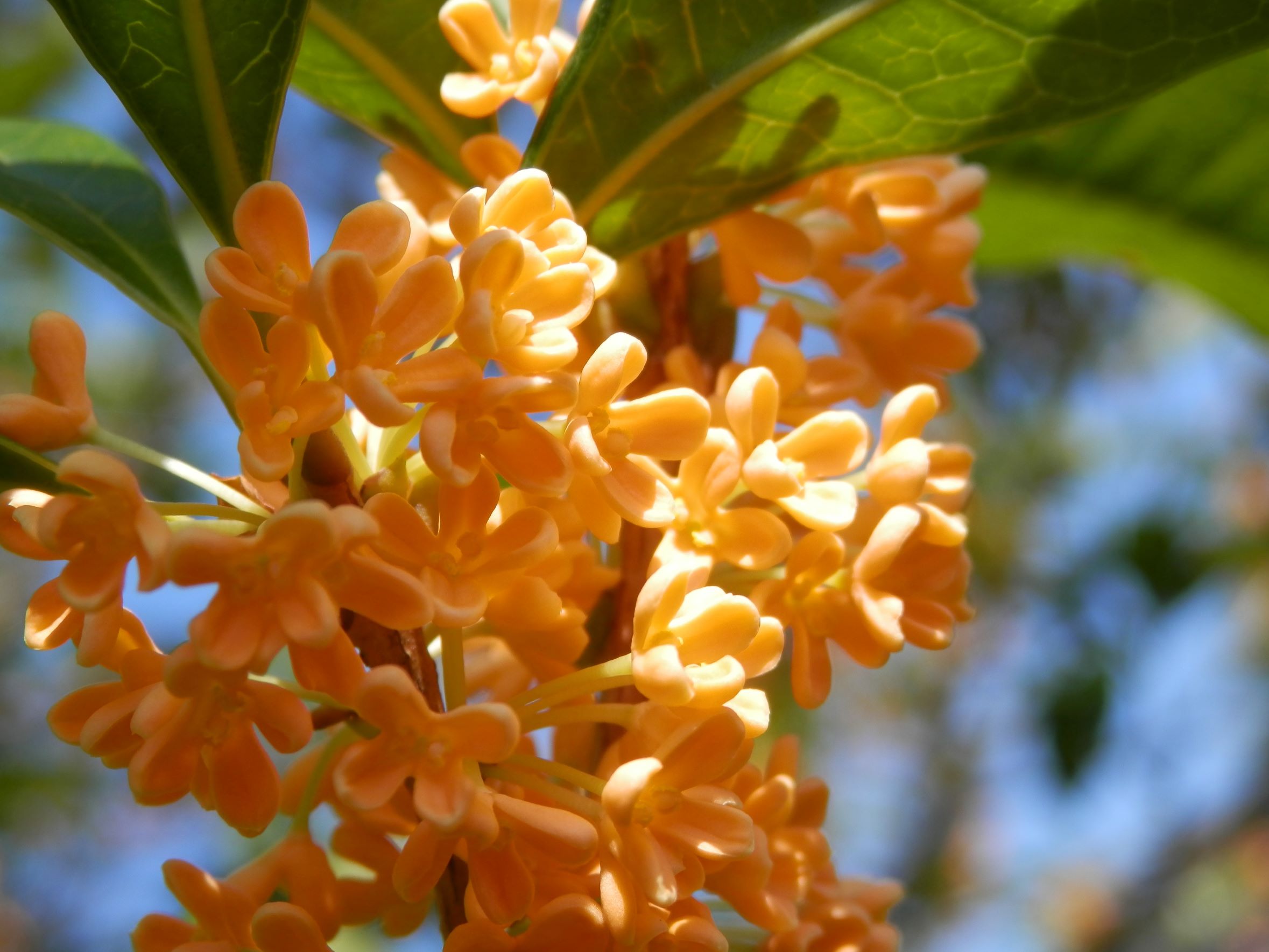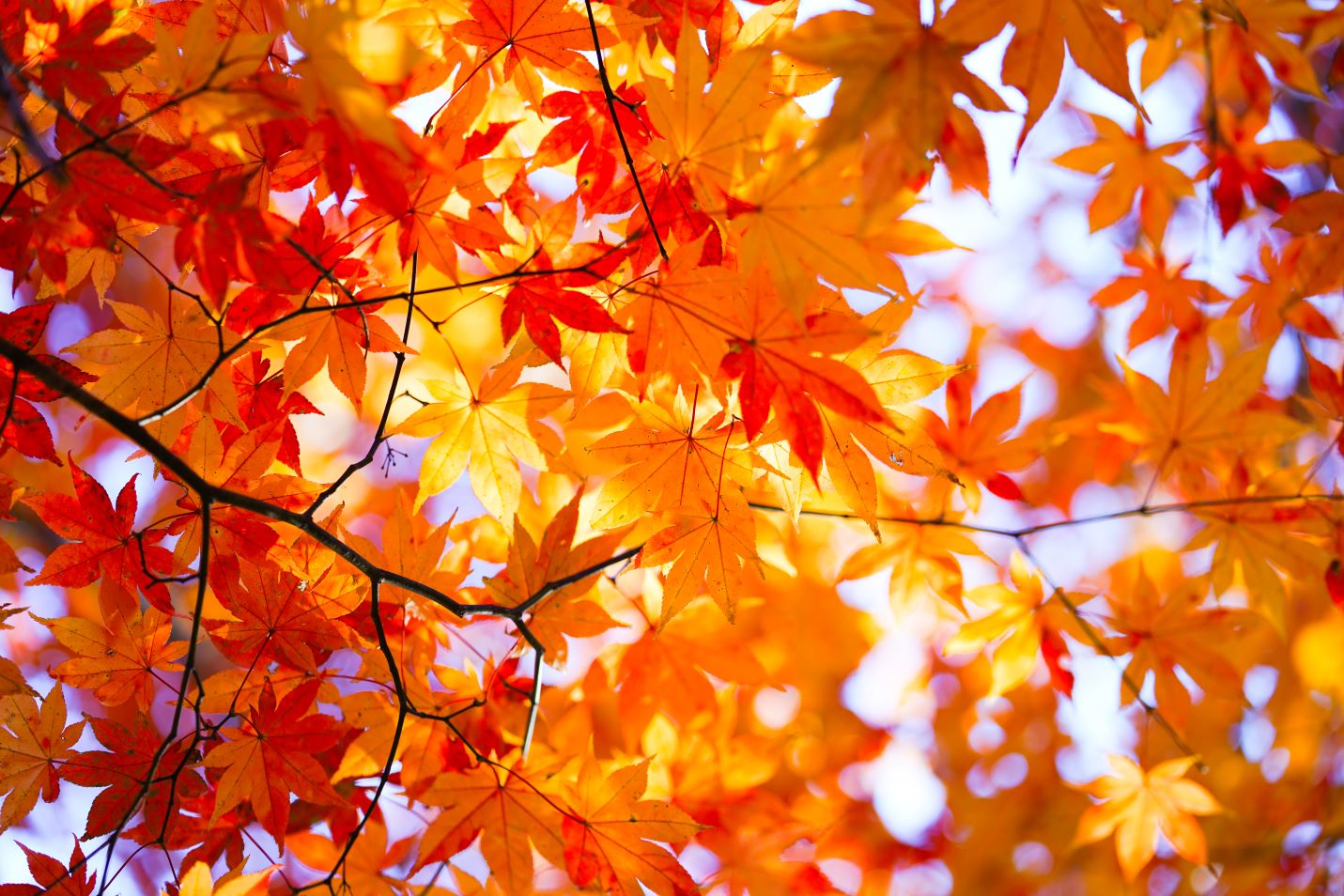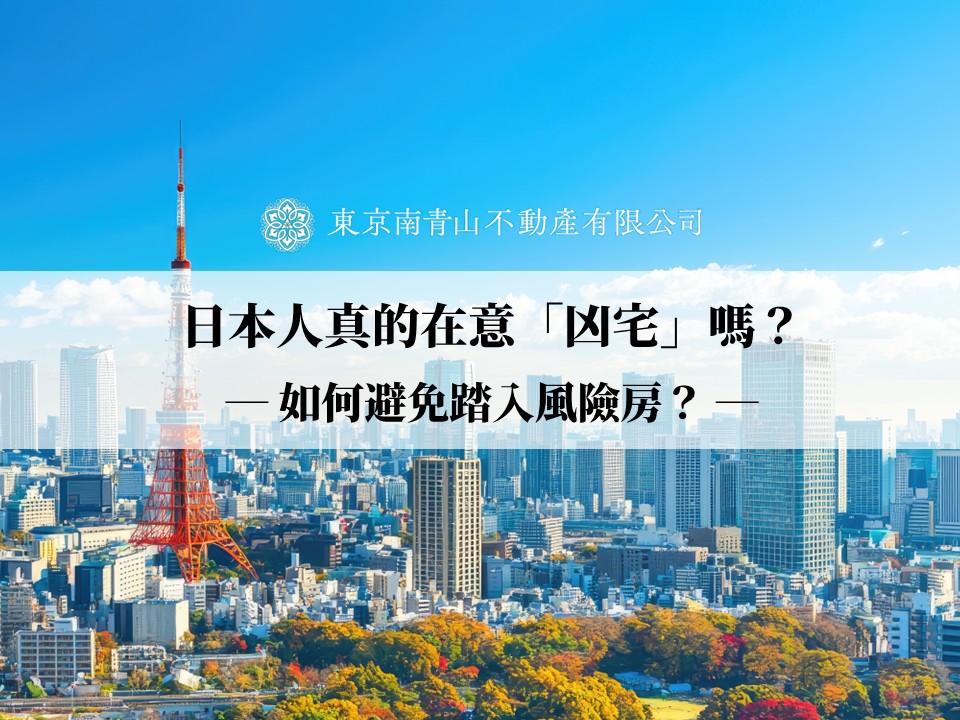Taito Ward encompasses two major towns in eastern Tokyo: Ueno and Asakusa. Asakusa is renowned as a symbol of Tokyo's tourism, having been the premier entertainment district from the Edo period through the Taisho era, fostering a wealth of cultural heritage and performing arts.
Ueno, on the other hand, serves as a pivotal transportation hub and a commercial center in eastern Tokyo. From the Meiji era to the present day, it has evolved into a cultural and artistic city, attracting people from all over the world with its national museums, art galleries, and the zoo.
Surrounding Ueno and Asakusa are traditional wholesale and artisan districts, featuring various specialized stores such as the kitchenware haven of Kappabashi, offering an array of specialized tools and materials. Conversely, in the northern part of the ward lies Yanaka, an area rich in retro charm with numerous well-preserved wooden structures and temples, gaining popularity in recent years as a destination for leisurely strolls.
The diversity within this compact area, spanning from bustling cityscapes to cultural hubs, tourist destinations, wholesale markets, and temple-lined streets, embodies the distinctive characteristic of Taito Ward.
National Museum of Nature and Science
Kappabashi Dougu Street
■1 Taito Ward from prehistoric times to medieval times
The topography of Taito Ward is divided into two distinct areas: the elevated plateau known as "Ueno Plateau" and the lower plains extending eastward from this high ground. Around 6,000 years ago, these lowlands were submerged by seawater, leading people to rely on fishing as their livelihoods atop the plateau. Consequently, remnants from the Paleolithic era are concentrated around the Ueno Plateau, particularly in the vicinity of the present-day Ueno Park. "Shinobazu Pond" stands as a vestige of this ancient inlet, where shell middens have also been unearthed along its banks.
With subsequent shifts in climate causing the coastline to recede, settlements expanded into these lower regions. Yet, even during this period, burial sites were often situated on elevated grounds, resulting in the discovery of numerous burial grounds from the Kofun period (3rd to 7th centuries) across the Ueno Plateau. Most have disappeared due to park development, but the lone surviving "Surihachiyama Kofun" is estimated to date back approximately 1,500 years.
As rural villages emerged in the lowlands, shrines and temples, serving as objects of faith, were established. The humble grass hut said to be the precursor to "Senso-ji Temple" was reportedly founded in the 7th century.
Shinobazu Pond
Suribachi Mountain
■2 Taito Ward in the Edo period
As the Edo period began, the previously undeveloped Taito Ward underwent rapid growth. Asakusa became prominent with the recognition of Senso-ji Temple by the Tokugawa Shogunate, and its proximity to highways leading to Nikko and the Tohoku region led to the emergence of numerous souvenir and tea shops along the temple grounds.
Behind Senso-ji Temple, there existed an area known as "Okuyama." Though the precise origin of its name remains uncertain, it is speculated to derive from the "Oku" in Senso-ji Temple's mountain name, "Kinryuzan." Okuyama boasted various entertainment venues from the early Edo period onwards, and during the mid-Edo era, as part of the government's morality regulations, Kabuki theaters, previously scattered across Edo, were consolidated into Okuyama, establishing it as a hub for Kabuki performances.
Ueno, situated on the plateau known as "Ueno," with the area around the present-day Ueno Station lying in the lower valley referred to as "Shitaya." Initially a quiet suburban area in the early Edo period, the establishment of Kan'ei-ji Temple on the Ueno plateau during the reign of the third Tokugawa Shogun led to the birth of Shitaya's temple town. Kan'ei-ji Temple was extensive, encompassing the entire present-day Ueno Park, with lodgings, tea houses, and sweet shops lining its precincts.
With the founding of Kan'ei-ji Temple, a congregation of temples emerged in the area behind the temple known as "Yanaka." The name "Yanaka" originates from the valley situated between Ueno and Komagome. It became a hub for artisans related to temples and shrines, fostering the identity of a craftsman district. This temple town, along with the elevated area toward Nippori from Yanaka, was renowned in the Edo period as the "Higurashi no Sato," offering a picturesque view of the downtown area.
The elevated area overlooking this region was called "Negishi," cherished secretly as a retreat for literati and artists during the mid-Edo period. It was also known as "Uguisudani," derived from the story of introducing melodious nightingales from Kyoto and releasing them, and is presently used as the name of a station on the Yamanote Line.
Nakamise Street, the approach to Sensoji Temple
Kan'eiji Temple
■3 Meiji era to prewar Taito Ward
With the advent of the Meiji era, Edo was renamed Tokyo Prefecture, and it was divided into 15 wards. In the current territory of Taito Ward, two districts emerged: Asakusa Ward and Shitaya Ward.
Shitaya Ward, centered around Ueno, witnessed significant developments in the early Meiji period. The grounds of Kaneiji Temple were transformed into Japan's first public park, Ueno Onshi Park. Within the park, national museums, art galleries, and a zoo were established, allowing Tokyo citizens to revel in the arrival of a new era.
As for Asakusa Ward, it further divided into seven sub-districts, notably the "Roku-kai" or the Sixth District, where entertainment venues from Okuyama and theaters from various areas were relocated, leading to the creation of the most vibrant entertainment district in Japan, known as "Asakusa Roku-kai." During this time, Asakusa Roku-kai featured Japan's tallest building, "Ryounkaku," and was adorned with Kabuki and Rakugo theaters. It also embraced emerging forms of entertainment like cinemas and strip theaters. Later, in the Taisho era, a genuine opera scene, dubbed "Asakusa Opera," became a popular trend.
Areas beyond Asakusa and Ueno quietly developed into peaceful residential districts for the common folk. Districts along the main streets like Asakusabashi, Kuramae, and Hanakawado inherited the legacy of merchant and artisan neighborhoods from the Edo period, continuing to thrive.
Negishi remained cherished as a retreat for cultured individuals even during the Meiji era and beyond, drawing renowned literary figures such as Mori Ogai and Masaoka Shiki to reside there. Luxury restaurants flourished, serving as hubs for their social interactions. Adjacent to Negishi, Iriya was renowned as a geisha district bustling with activity.
Ueno Onshi Park
Asakusa Rokku
■4 Taito Ward after the war
In 1947, due to a reorganization of the city's administrative divisions, Asakusa and Shitaya merged to form Taito Ward. The name "Taito" originates from the geographical characteristics of the ward, with "tai" representing the elevated grounds of Ueno and "to" indicating the eastern location from the Ueno plateau, where areas like Asakusa reside. After World War II, Tokyo witnessed a surge in massive construction demands, causing bustling activities around Ueno Station, which served as the terminal for travelers from the Tohoku region and attracted groups of job seekers and migrant laborers.
To meet the robust needs of these workers, a massive black market, an unofficial market, emerged between Ueno and Okachimachi stations. This later evolved into what is now known as "Ameya-Yokocho" or "Ameyoko."
Districts like Kuramae, Asakusa, Asakusabashi, and Okachimachi, along with their merchant quarters, thrived due to the nationwide post-war reconstruction demands. They further specialized and diversified. Today, they are recognized for specific items such as kitchenware in Kappabashi, footwear in Hanakawado (Asakusa), precious metals in Okachimachi, leather goods, toys, and stationery in Kuramae, textiles, handicraft materials, and Japanese dolls in Asakusabashi, Buddhist altars and accessories in Shitamachi, and electrical appliances in Suehirocho. These specialties contribute to the unique character of Taito Ward.
Asakusa has become one of Tokyo's representative tourist spots, attracting a significant number of foreign visitors. The district's Sixth District hosts daily live performances of rakugo, comedy acts, magic shows, acrobatics, and traditional storytelling, making it a hub for popular entertainment. With its preserved wooden structures and narrow alleys, it offers glimpses of the Showa era's streets, making it popular as a place for leisurely strolls in recent years.
Moreover, historical landmarks like the "Former Five-Storied Pagoda of Kaneiji Temple" and the "Tokyo Designated Historical Building Ueda Residence" remain in Taito Ward. The former, constructed in 1631, houses the statues of the Four Deva Kings on its first level. It now stands within Ueno Zoo. The latter is a building that used to be the old Shinobi Ryokan (inn), constructed in 1929, notable for its stone-like exterior walls cut with mortar joints. It features a unique staggered design across three stories and an attic, creating a sense of spaciousness despite being a three-story structure.
Ameyoko shopping street
rickshaw
■5 The Future of Taito Ward
Asakusa has recently been re-evaluated for its potential as a tourist destination. Areas like 'Yanaka' and 'Senzoku,' which were not particularly major as lodging spots, have seen a surge in new accommodations. Additionally, there's a growing number of tours offering experiences in traditional crafts and entertainment, marking the birth of a new tourism-driven economy across the Taito Ward.
Paradoxically, while large-scale redevelopment is underway in other sub-centers like Shibuya and Ikebukuro, it further highlights the retro ambiance of Ueno and Asakusa, garnering increased affection and attention from people. In recent years, districts like Kuramae and Asakusabashi have seen an increase in young artisans setting up small workshops and shops, carrying forward the charm of traditional crafts.
As Taito Ward is a district visited by many foreigners in Japan, it exudes a hospitable spirit and embraces diversity. The number of foreign tourists continues to rise, and it's anticipated that the inbound influx will blend new perceptions with Japanese culture, evolving into a city where everyone can creatively, uniquely, and happily spend their time.
Sensoji Temple, one of the symbols of Asakusa
■6 Traditional Culture Mini Column: Tokyo Chokin (Metal Chasing) Craftsmanship
"Tokyo Metal Engraving" refers to the technique that Edo craftsmen developed during the mid-Edo period, elevating the existing engraving skills that originated before the Heian era to a higher level through the method known as "Katakiri-bori" (single line carving). These artisans, known as "Kazari-shokunin," employ carving chisels called "Tagane" to delicately portray designs on metal surfaces, resembling the intricate touch of Japanese paintings.
Initially utilized for adorning swords, armor, Buddhist altars, and Shinto tools, this technique expanded during the Edo era to include everyday items like "Kiseru" smoking pipes and "Netsuke" toggles. In recent times, it has ventured into decorative pieces such as rings, pendants, and obi clips.
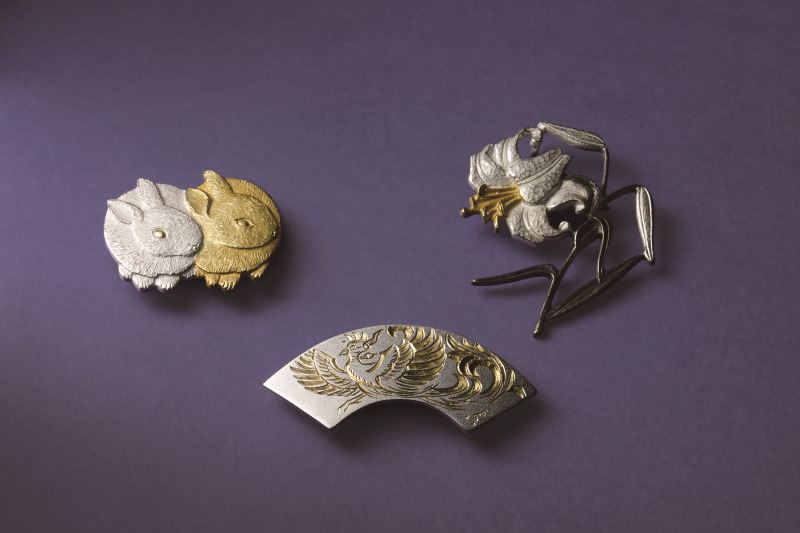
Tokyo Chokin (Metal Chasing)


